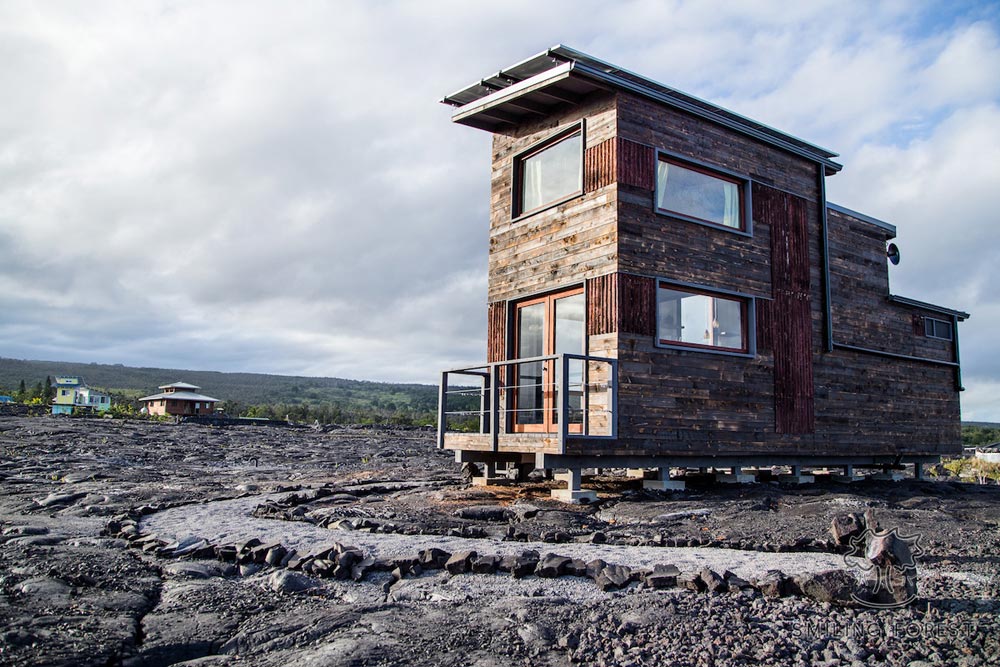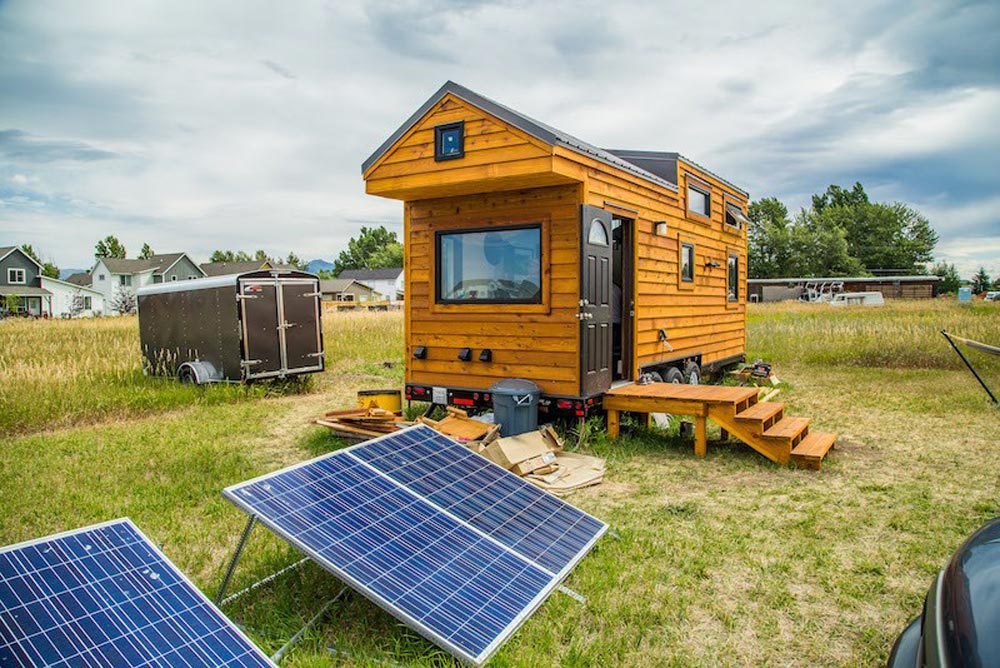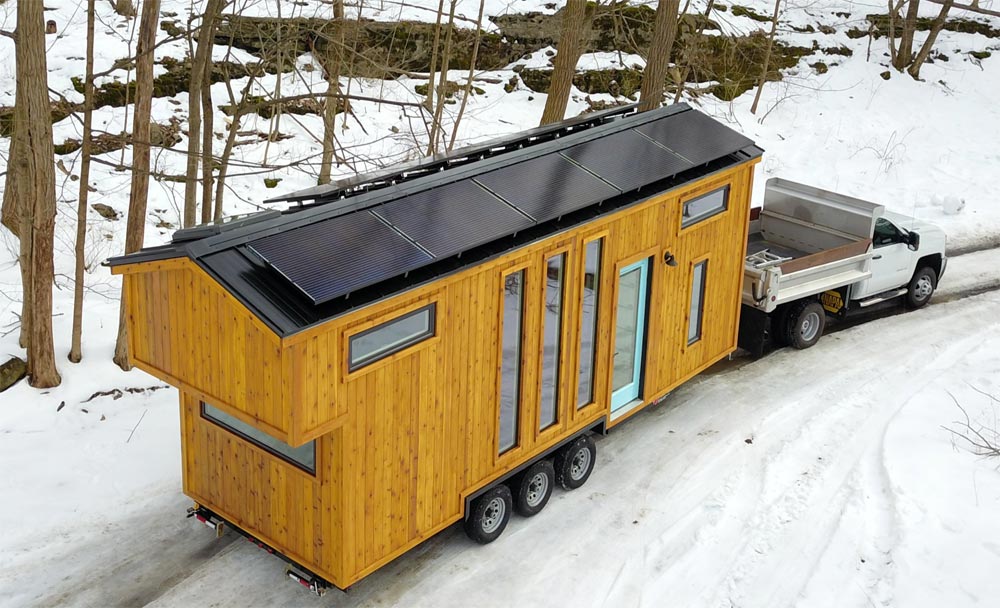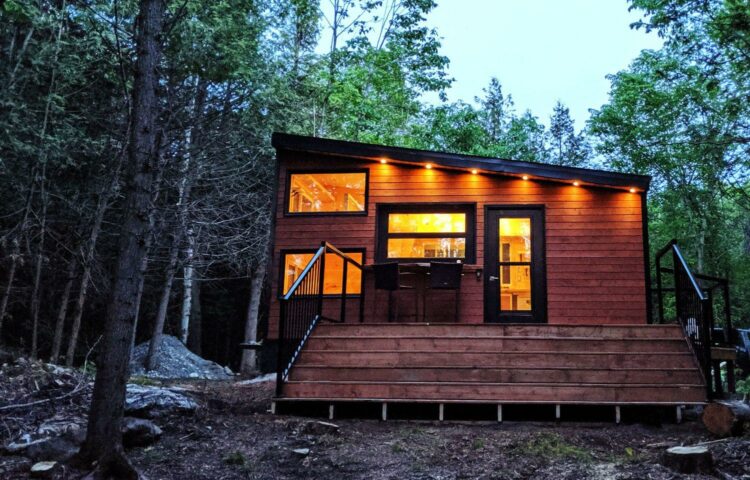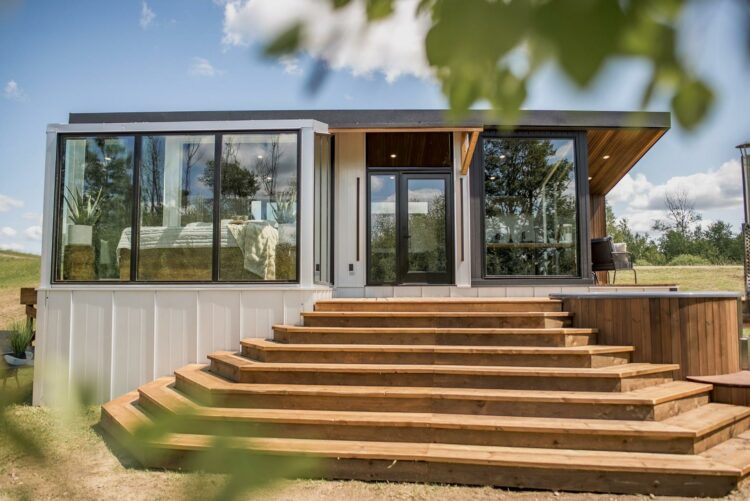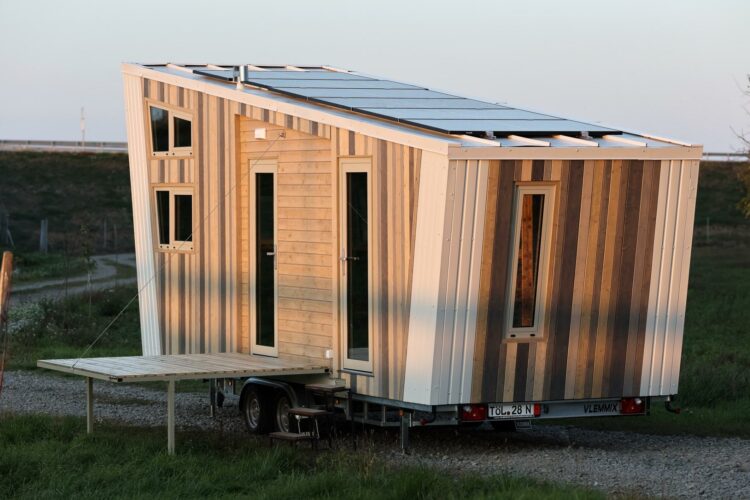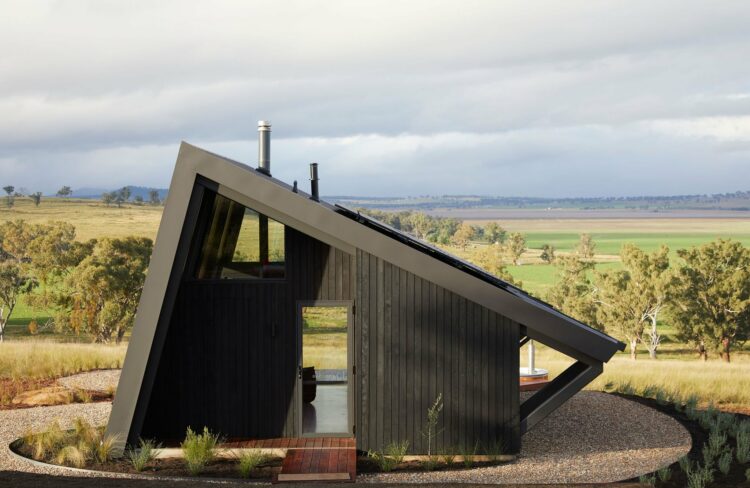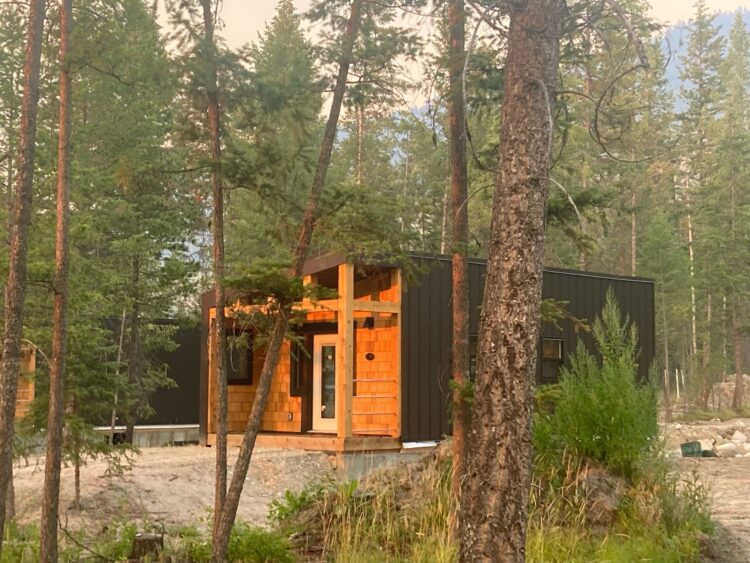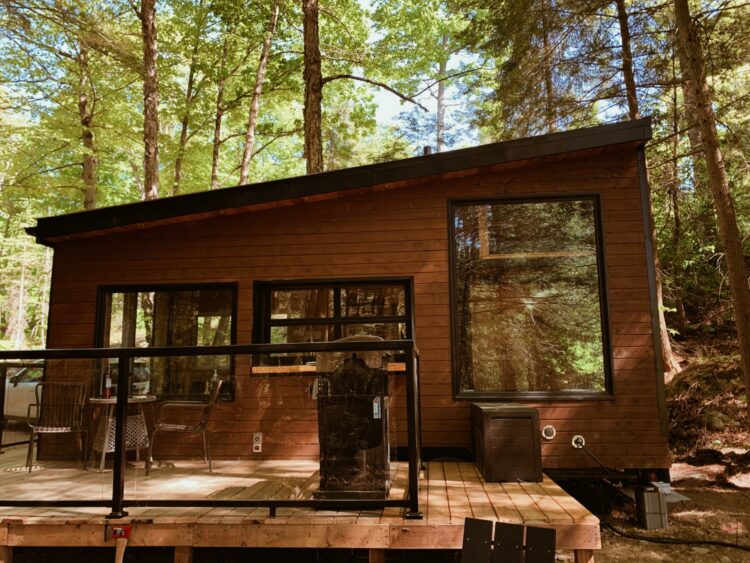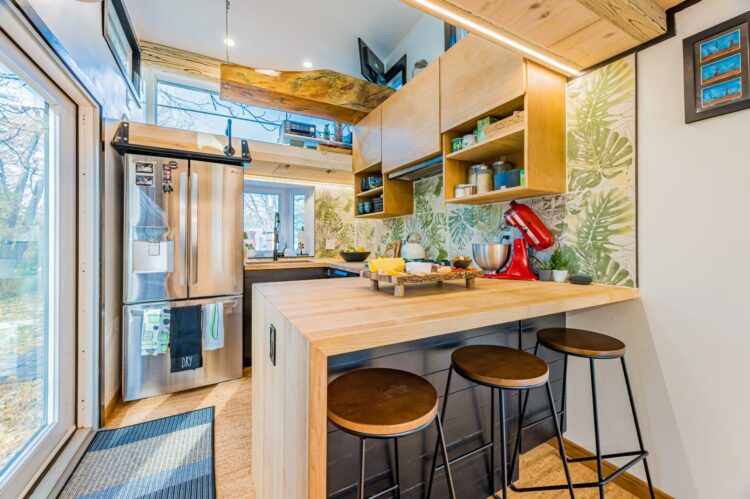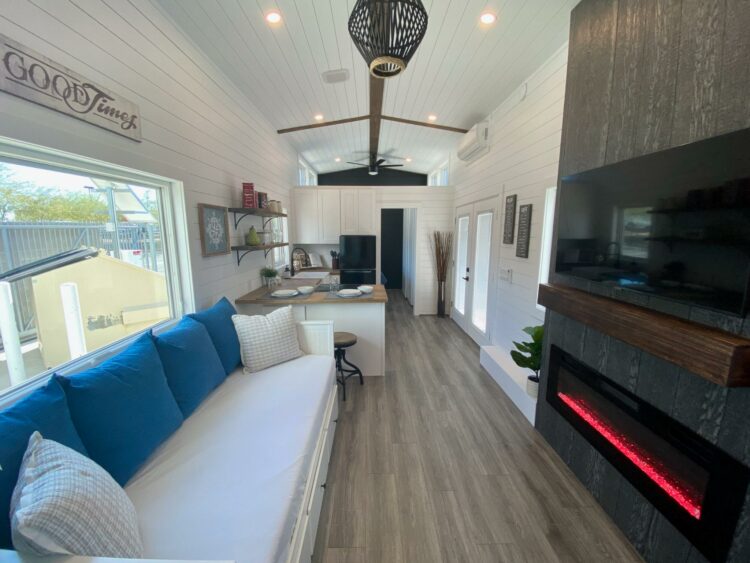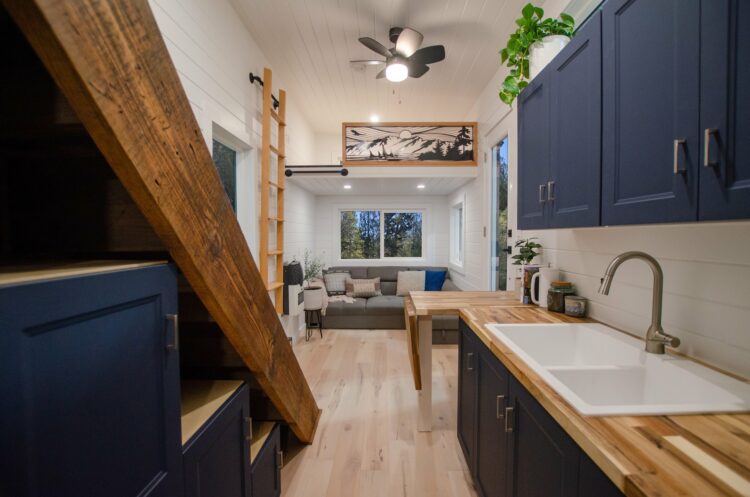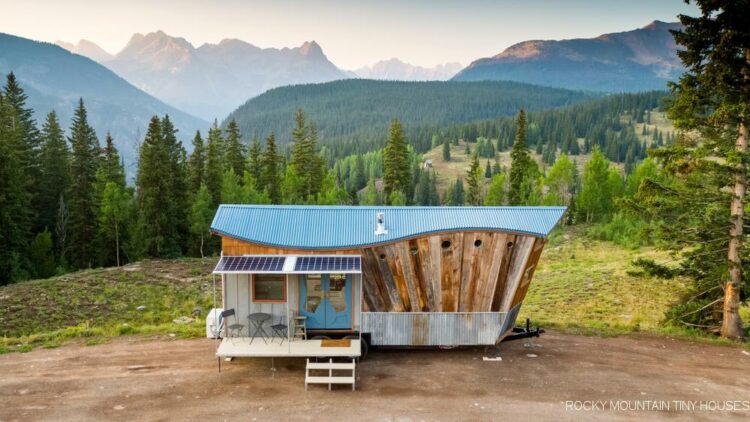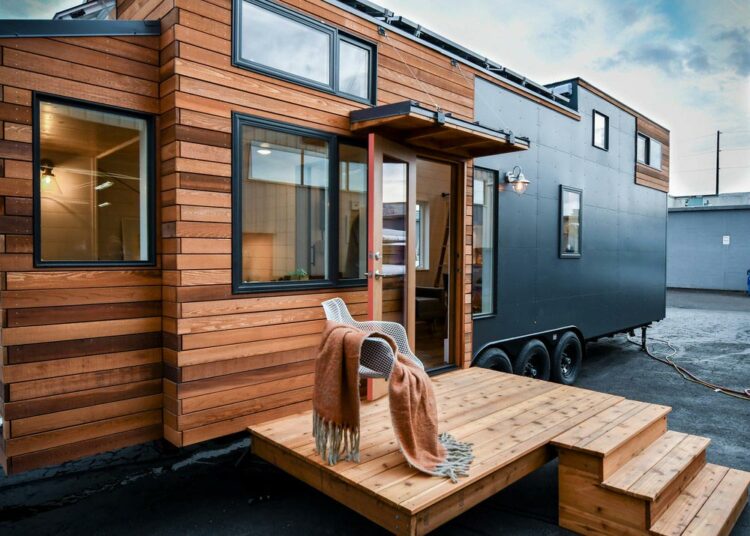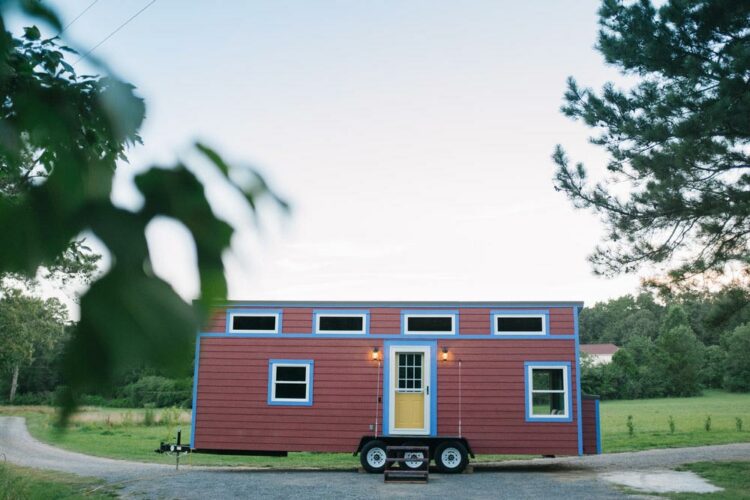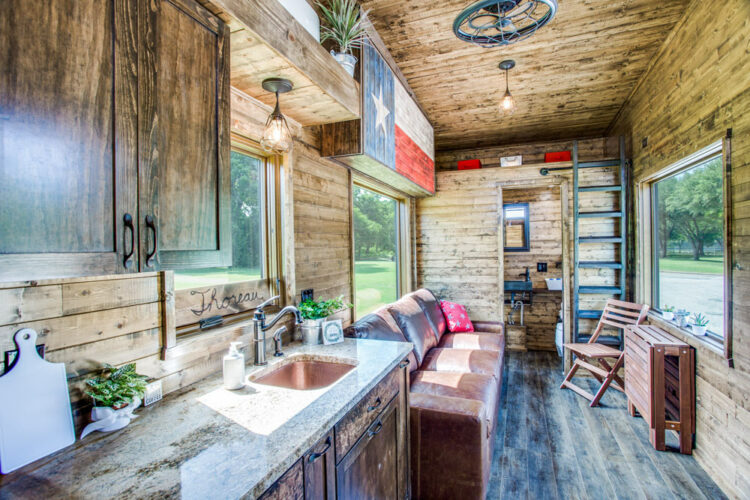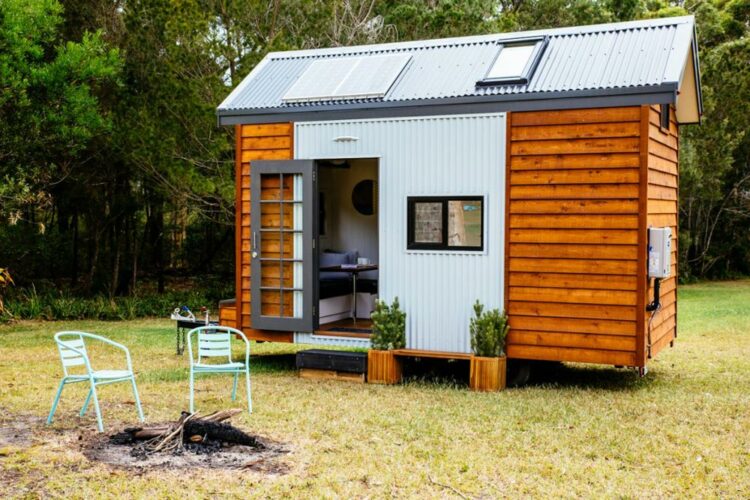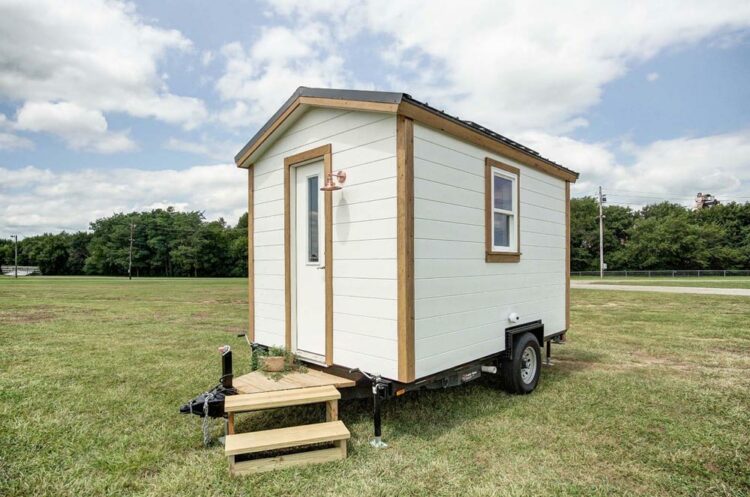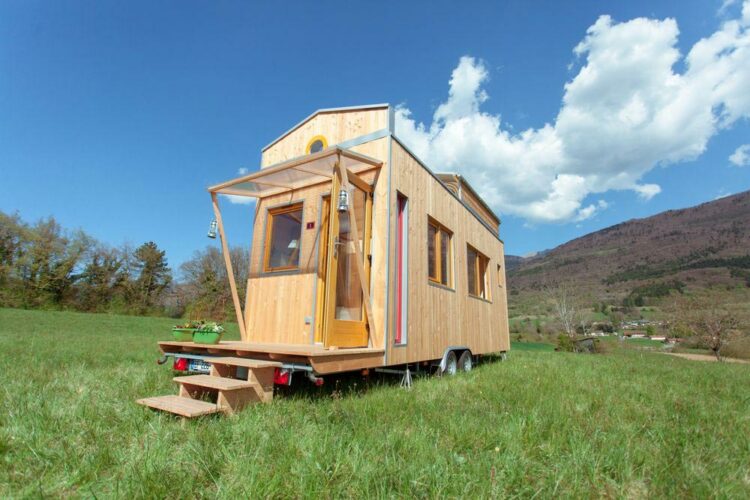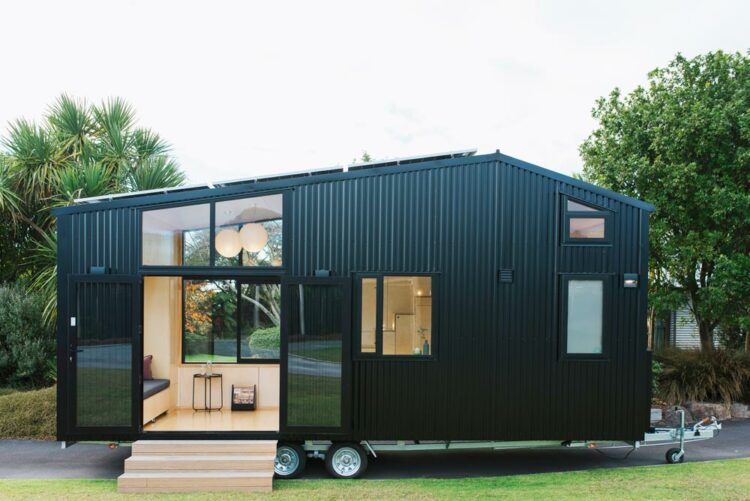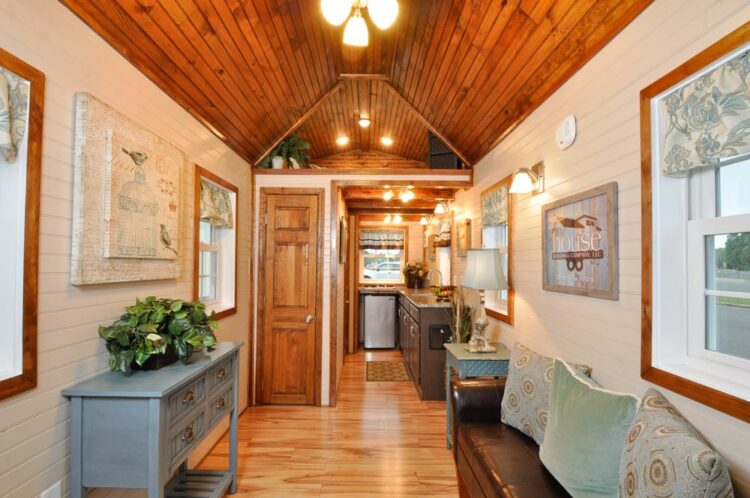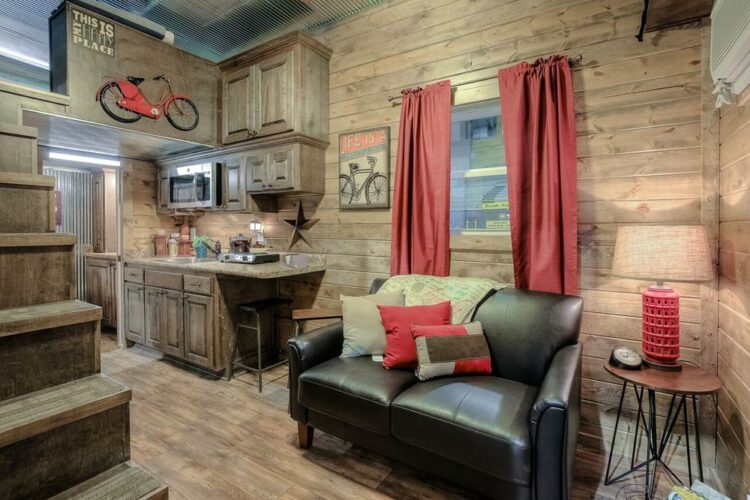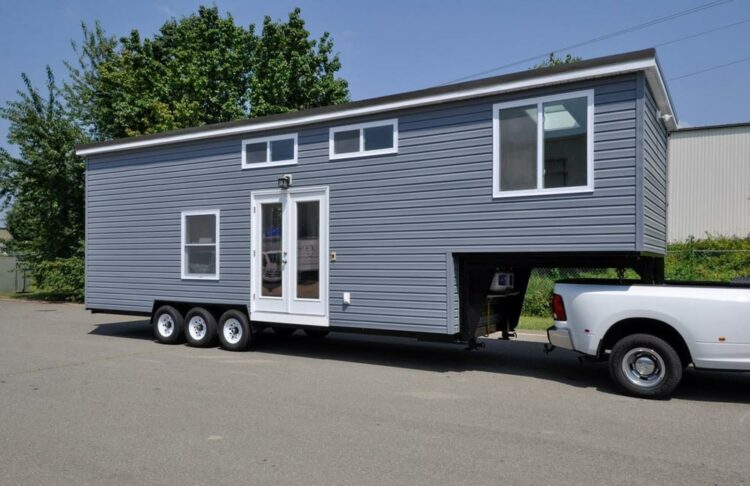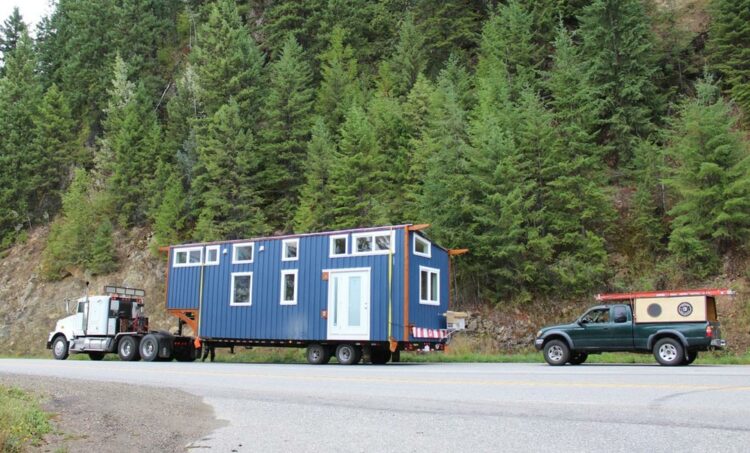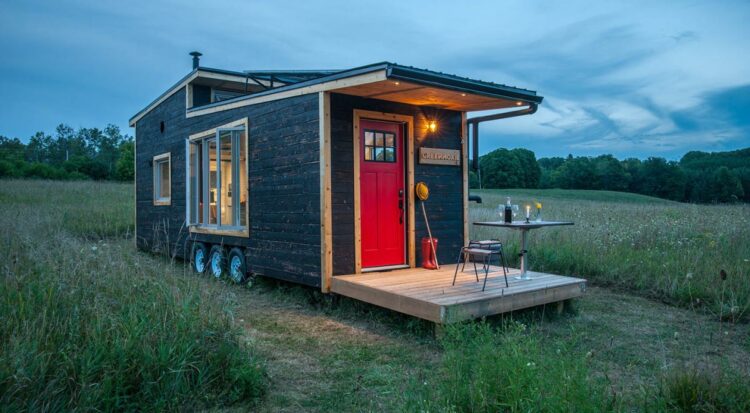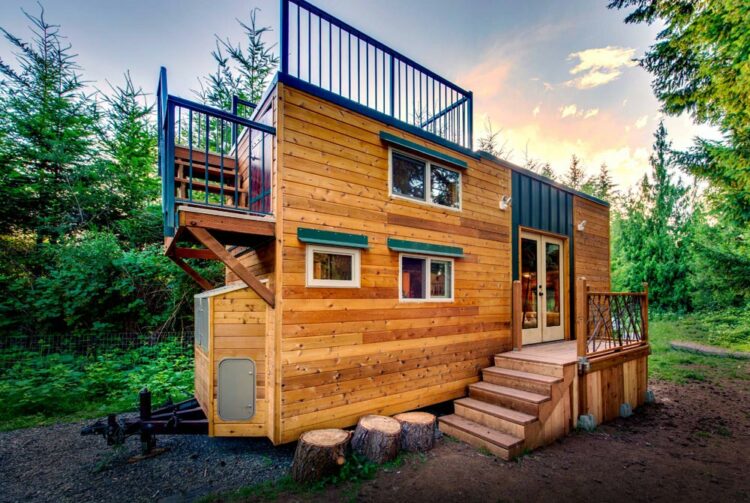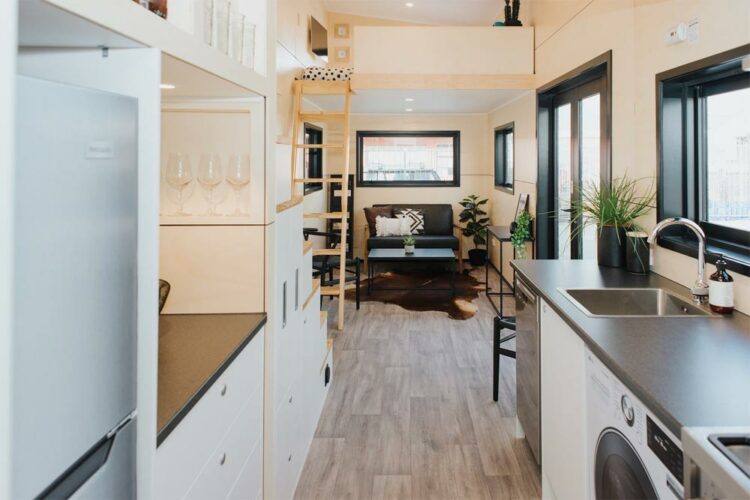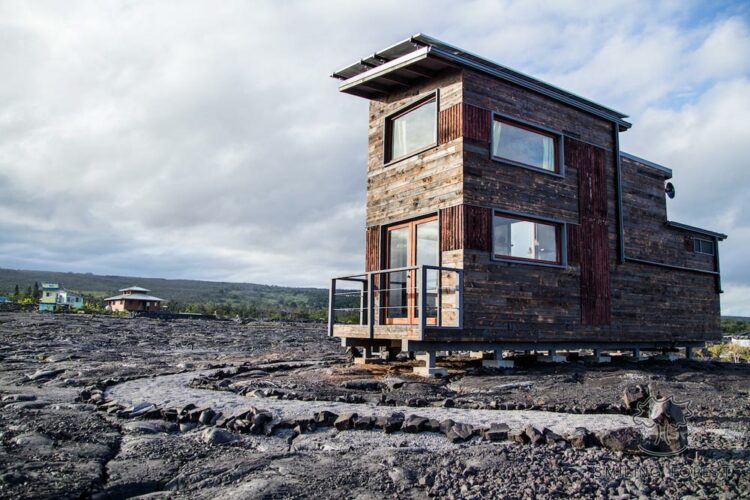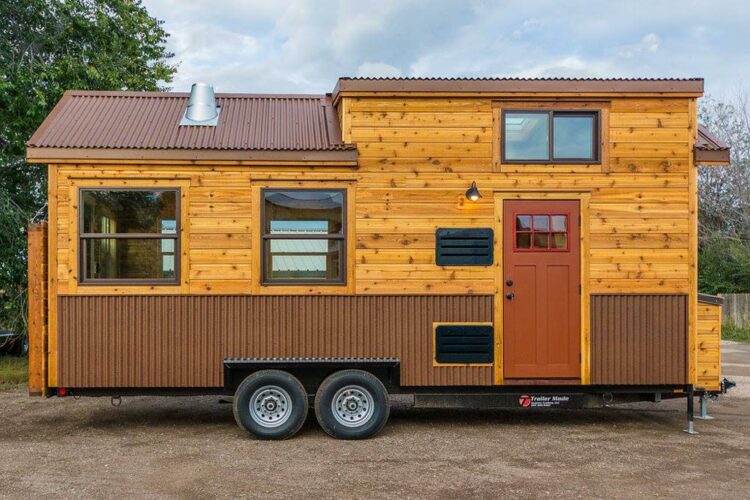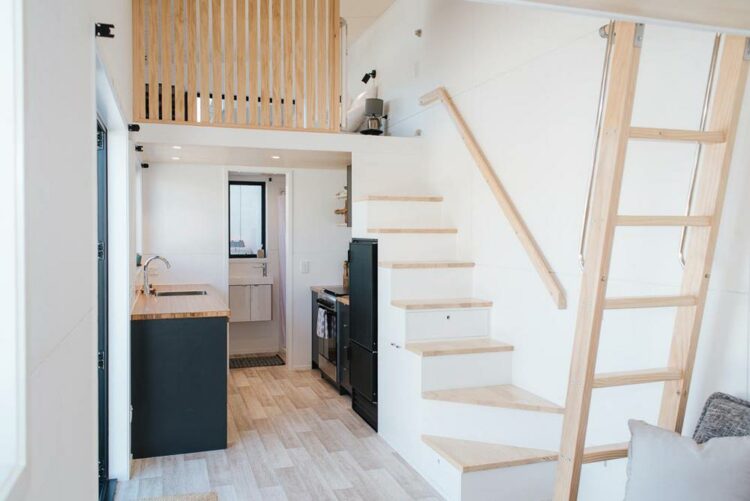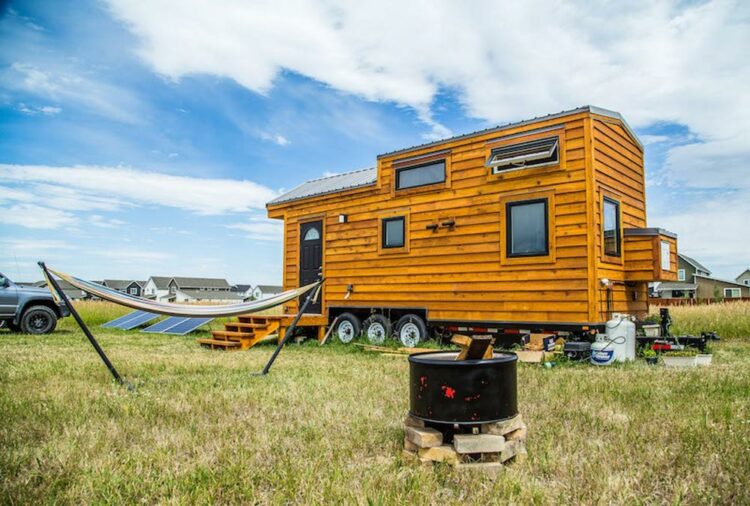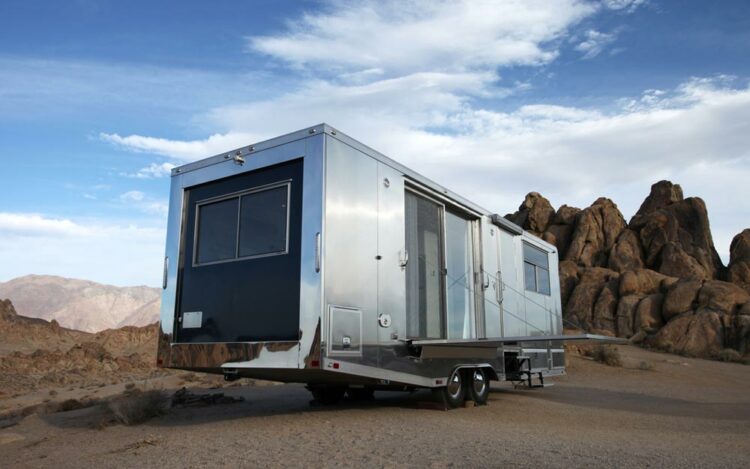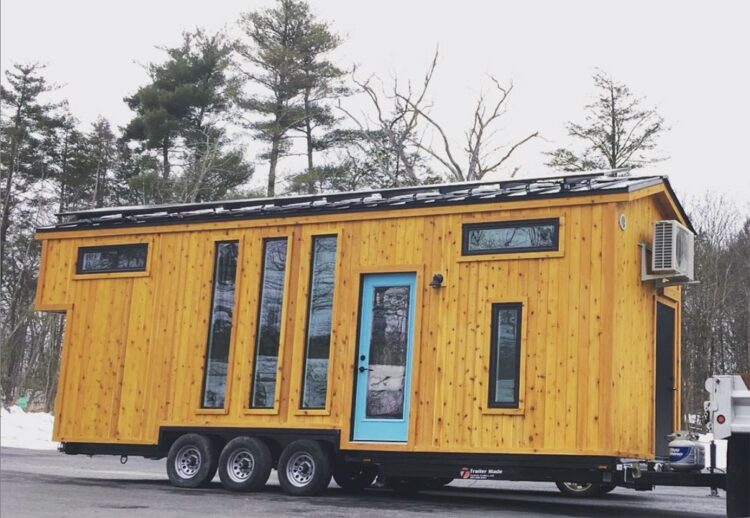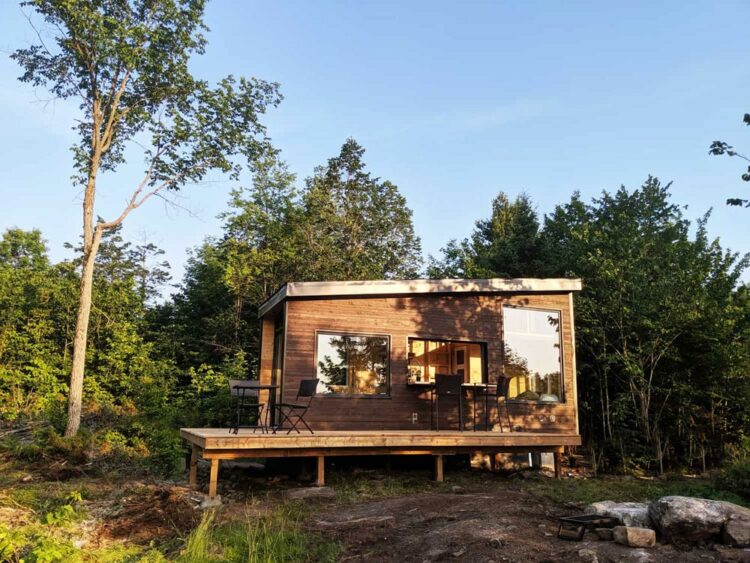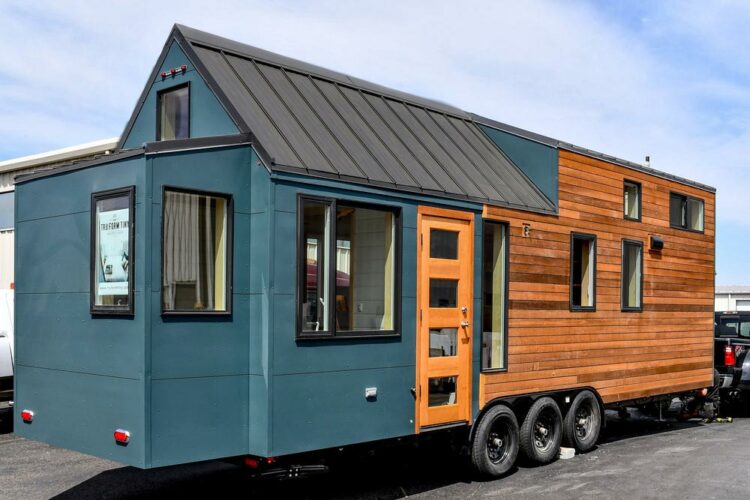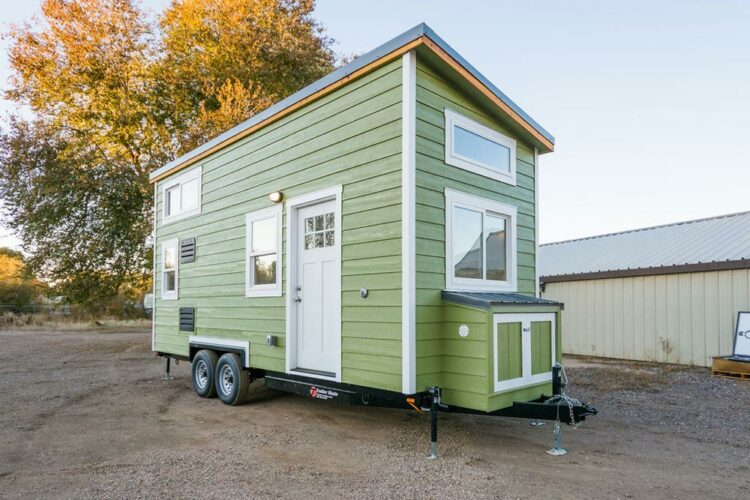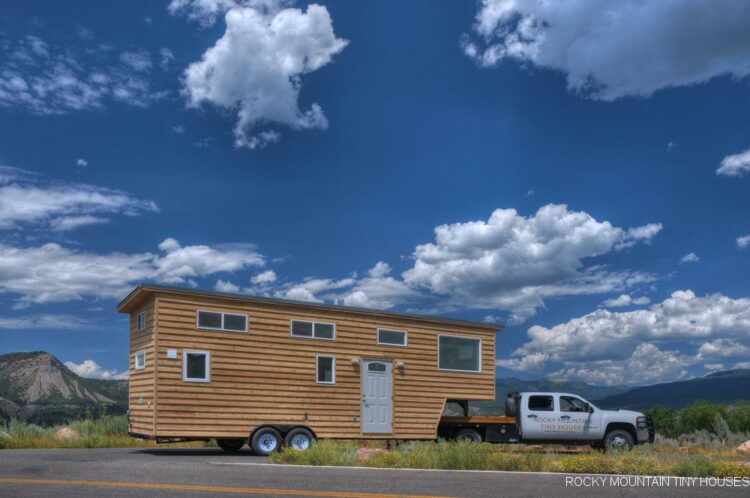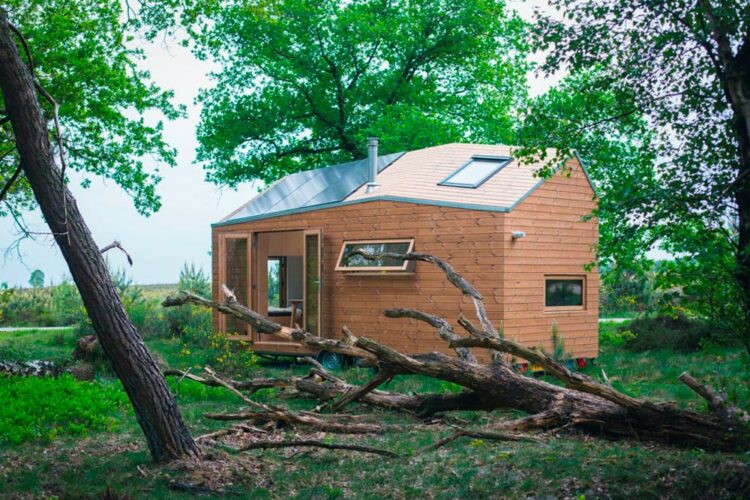Off-grid tiny houses have become increasingly popular in recent years due to their affordability, sustainability, and flexibility. These small homes are designed to operate completely off the grid, meaning they don’t rely on traditional utilities such as electricity, water, and sewage systems.
What are Off-Grid Tiny Houses?
Off-grid tiny houses are small homes that are not connected to the traditional power grid, water supply, or sewage system. Instead, they are designed to be self-sufficient and sustainable, relying on renewable energy sources like solar panels, wind turbines, or hydroelectric generators. These homes are typically very small, ranging from 100 to 400 square feet, and are often built on wheels or on a foundation on a piece of land.
While living off the grid may seem daunting to some, there are many resources available to help those interested in making the switch. From online communities to workshops and courses, there are many ways to learn about the ins and outs of off-grid living and how to design and build an off-grid tiny house that meets your needs and budget. With the right tools and knowledge, anyone can enjoy the benefits of living off the grid in a cozy and sustainable tiny home.
Benefits of Off Grid Tiny Houses
One of the main benefits of living in an off-grid tiny house is the freedom it provides. These homes can be located in remote areas, allowing residents to disconnect from the hustle and bustle of city life and enjoy the peace and quiet of nature. Additionally, off-grid tiny houses are often more affordable than traditional homes, making them an attractive option for those looking to downsize or live a more minimalist lifestyle.
Cost Savings
Off-grid tiny houses offer significant cost savings compared to traditional homes. With no need for utility bills, homeowners can save thousands of dollars every year. Additionally, the initial investment in building or buying an off-grid tiny house is much lower than that of a traditional home. The smaller size of the house means less material is needed, and the lack of a foundation reduces costs even further.
Environmental Benefits
Off-grid tiny houses have a much smaller environmental footprint than traditional homes. By relying on renewable energy sources like solar panels, wind turbines, and hydroelectricity, off-grid tiny houses produce zero carbon emissions. Additionally, the smaller size of the house means less energy is needed to heat and cool the space, further reducing the environmental impact.
Off-grid tiny houses also promote sustainable living by encouraging homeowners to be mindful of their resource consumption. By living off the grid, homeowners must be conscious of their water and energy usage, leading to a more sustainable lifestyle overall.
Mobility and Flexibility
One of the biggest benefits of off grid tiny houses is their mobility and flexibility. Unlike traditional homes, off-grid tiny houses can be easily moved from one location to another, allowing homeowners to travel and explore new areas without sacrificing the comforts of home. Additionally, off-grid tiny houses can be customized to fit the unique needs and preferences of the homeowner, offering a level of flexibility and personalization that is not possible with traditional homes.
Off-grid tiny houses also provide a sense of freedom and independence. By relying on renewable energy sources and sustainable living practices, homeowners can break free from the constraints of traditional utility companies and live on their own terms.
Off-Grid Living Essentials
Power Generation
Generating power is one of the most important things to consider when living off-grid in a tiny house. There are several options available, including:
- Solar panels
- Wind turbines
- Hydroelectric power
- Generator
Solar panels are the most popular option for off-grid tiny houses. They are easy to install, require little maintenance, and provide a reliable source of energy. Wind turbines and hydroelectric power are also viable options, but they require more space and can be more expensive to install. A generator can be used as a backup power source, but it is not a sustainable long-term solution.
Water Management
Managing water is another essential aspect of off-grid living. Here are some ways to ensure a reliable water supply:
- Rainwater harvesting
- Well water
- Water delivery
- Water filtration and purification systems
Rainwater harvesting is a popular option for off-grid tiny houses. It is a sustainable way to collect water, and it can be used for a variety of purposes, including drinking, cooking, and cleaning. Well water is another option, but it can be expensive to drill a well. Water delivery is a convenient option, but it can also be costly. Water filtration and purification systems are necessary to ensure that the water is safe to drink.
Waste Management
Proper waste management is crucial for off-grid living. Here are some ways to manage waste:
- Composting toilet
- Incinerator toilet
- Greywater system
- Septic system
A composting toilet is a sustainable way to manage human waste. It turns waste into compost, which can be used as fertilizer. A greywater system collects and filters water from sinks, showers, and washing machines, and it can be used for irrigation. A septic system is a more traditional option, but it can be expensive to install and maintain.
Design Considerations for Off-Grid Tiny Houses
Solar Orientation
When designing an off grid tiny house, it’s important to consider the orientation of the house in relation to the sun. The orientation can have a significant impact on the amount of solar energy that can be harvested, which is essential for powering the house. Ideally, the house should be oriented to face south in the Northern Hemisphere and north in the Southern Hemisphere to maximize exposure to the sun.
It’s also important to consider the placement of windows and doors to maximize natural light and ventilation while minimizing heat loss or gain. Proper shading can also help regulate the temperature inside the house and reduce the need for heating or cooling systems.
Insulation and Ventilation
Insulation is critical for maintaining a comfortable temperature inside an off-grid tiny house, especially in extreme climates. High-quality insulation can help reduce heat loss or gain, which can significantly reduce the amount of energy needed for heating or cooling the house.
Proper ventilation is also important to prevent moisture buildup and mold growth, which can be a health hazard. Ventilation can also help regulate the temperature inside the house and reduce the need for heating or cooling systems.
Materials and Construction
The choice of materials and construction techniques can have a significant impact on the energy efficiency and sustainability of an off grid tiny house. It’s important to choose materials that are durable, energy-efficient, and environmentally friendly.
For example, using recycled or reclaimed materials can reduce the environmental impact of the house and lower the overall cost. Building with insulated concrete forms (ICFs) or structural insulated panels (SIPs) can also improve energy efficiency and reduce the need for heating or cooling systems.
It’s also important to consider the overall design and layout of the house to maximize space and functionality while minimizing waste. Tiny house builders use multifunctional furniture and storage solutions that can help reduce clutter and make the most of limited space.
Challenges of Off-Grid Tiny Houses
Off-grid tiny houses are becoming increasingly popular as people seek to live a simpler, more sustainable lifestyle. However, living off the grid in a tiny house comes with its own set of challenges.
Limited Space
One of the biggest challenges of living in a tiny house is the limited space. When you are living off the grid, you need to be very mindful of the amount of space you have and how you are using it. You may need to get creative with storage solutions and find ways to maximize your living space. For example, you could use vertical space by installing shelves or hanging baskets.
Maintenance and Repairs
Another challenge of off-grid tiny house living is the maintenance and repairs that are required. When you are living off the grid, you are responsible for maintaining and repairing all of your systems, including your water, heating, and electrical systems. This can be time-consuming and expensive, especially if you are not handy with tools. It is important to have a plan in place for regular maintenance and to have a backup plan in case of emergencies.
Zoning and Legal Issues
Zoning and legal issues are another challenge that off-grid tiny house dwellers may face. Many areas have zoning laws that prohibit living in a tiny house, or that require the house to be connected to the grid. It is important to do your research and make sure that you are in compliance with all local laws and regulations. You may need to work with local officials to find a solution that works for everyone.
Examples of Off-Grid Tiny Houses
One of our favorite off grid tiny homeowners is Ariel McGlothin. She has been living off-grid since 2014, blogs about her experience at Fy Nyth, and she has an amazing YouTube channel about homesteading and living off-grid.
We have featured a lot of off-grid tiny houses on Tiny Living over the years. Here is a list to help give you ideas of what is possible!
- Ember by CabinscapeEmber by Cabinscape offers a quiet, off-grid retreat nestled along the Tay-Havelock rail trail in Maberly, Ontario. Perfect for outdoor enthusiasts, the cabin is accessible via a short hike or bike ride from a nearby trailhead, creating a secluded, nature-focused escape. The Fall River serves as a scenic backdrop, ideal for paddlers looking to explore …
- Refuge Bay Halcyon Stay by Fritz Tiny HomesBuilt by Fritz Tiny Homes, this customized Halcyon Stay offers a one-of-a-kind experience, blending thoughtful design with nature immersion. Nestled within an eco-tourism resort, Refuge Bay in Alberta, Canada, this tiny home is crafted for those seeking to unplug, relax, and reconnect with the natural world. What makes this home stand out is its “moon …
- Saturn by Tiny Wunder HouseSaturn brings a refreshing approach to off-grid living with a blend of innovation and style. Built by Tiny Wunder House in Romania, this modern tiny house is crafted to offer outstanding comfort and convenience, redefining the experience of living off the grid. Superior Insulation The Saturn by Tiny Wunder House stands out with its exceptional …
- Gilay Estate – An Off-Grid Tiny HouseThe Gilay Estate is a beautifully designed, off-grid luxury accommodation situated in the rural landscape of Quirindi, New South Wales, Australia. The home was designed by Cameron Anderson Architects and built by Aztek Constructions. This tiny yet luxurious retreat opened to the public in May 2024 and is now accepting reservations on Airbnb. Key Features: …
- Hemlock by Rover Tiny HomesExperience Backcountry Living with the Hemlock The Hemlock is built for backcountry living, wrapped in steel cladding with timber-accented features for minimal upkeep. A covered patio extends the outdoor experience, even on Canada’s rainy West Coast days. This home’s design includes a main floor bedroom, a spacious great room, a large bathroom, and an integrated …
- Cove Cabin by CabinscapeLocated on a serene cove on Duck Lake, Cove Cabin by Cabinscape offers an idyllic escape within the Haliburton Forest & Wild Life Reserve. This charming tiny cabin is one of several on the lake, including Willow, Kaya, and Big Rock cabins, providing a welcoming haven for cyclists, hikers, and paddlers looking to recharge after …
- Domek by Acorn Tiny HomesDuring the lockdown, when many were engrossed in television shows, D’Arcy McNaughton of Acorn Tiny Homes was engaged in an ambitious project: constructing a fully off-grid tiny house for his growing family. This endeavor, named Domek, is situated in Toronto, Canada, and serves as a testament to McNaughton’s commitment and skill in tiny house construction. …
- Jen’s Château by Uncharted Tiny HomesIntroducing Jen’s Château by Uncharted Tiny Homes, a compact and customized tiny house built on a 34-foot-long trailer. This tiny house offers a main floor bedroom, a guest sleeping loft, an open kitchen, and a living area with fireplace, making it ideal for those seeking a minimalist and versatile living experience. Highlights of this tiny …
- Salish Sea: A Solar-Powered Tiny House Marvel for Eco-Conscious LivingA remarkable tiny house powered entirely by an off-grid solar system. In a world where sustainable living is gaining increasing importance, the tiny house movement has emerged as a beacon of eco-consciousness and minimalist living. Among the many remarkable tiny homes in existence, Salish Sea by Rewild Homes stands out as a true marvel of …
- San Juan by Rocky Mountain Tiny HousesIn 2013, Rocky Mountain Tiny Houses founder, Greg Parham, built his first tiny house — a 16-foot Durango model that offered plenty of room for a single guy. Now that he’s married and has two dogs, he and his wife, Stephanie, worked together on nights and weekends to build their new home, the San Juan! …
- Urban Payette w/ Office by Tru Form TinyWork from home? This Urban Payette by Tru Form Tiny has a private office with a barn door and a built-in couch with storage underneath! The 28-foot home also has a full solar panel array for off-grid living. The exterior is clad in clear cedar siding and black panels with black window trim. A full …
- Big Whimsy by Wind River BuiltAt 30-feet long, the Big Whimsy is one of the largest tiny homes from by Wind River Built. The extra spacious interior allows for two loft bedrooms, an office space with built-in desk, and a walk-in closet. With its whimsical colors and bright accents, the Big Whimsy is the owner’s dream home brought to life. …
- Thoreau by Indigo River Tiny HomesThe Thoreau is a 28-foot custom built, off-grid tiny house on wheels with main floor bedroom. The home was built by Dallas, Texas-based Indigo River Tiny Homes. The rustic wood siding has a light Shou Sugi Ban finish. A large storage shed houses a 50-gallon water tank, two propane tanks, and tankless hot water heater. …
- Independent Series 4800DL by Designer Eco HomesDesigned and built by Designer Eco Homes, the Independent Series 4800DL is approximately 16-feet long and has a king size loft, kitchen, bathroom, lounge/dining area, and ample storage space. The home has a hybrid solar power system so it can run on- or off-grid. The Australian builder used Western Red Cedar and corrugated metal for …
- Nugget by Modern Tiny LivingIf a tiny house isn’t small enough for you, how about a micro house? Built by Modern Tiny Living, the Nugget is a 12-foot long, 102-square-foot home! Packed in the Nugget is a main floor sleeping area, bathroom with composting toilet and 30″x30″ shower, and a kitchen with large single bowl sink, copper faucet, hickory …
- Head in the Stars by OptinidWith its sliding roof, the Head in the Stars offers a unique tiny house experience. Built by France’s Optinid, this tiny home gives you the chance to sleep under the stars from the comfort of your own bed. The tiny home is built on a 7.2m trailer with a small covered entryway and terrace. The …
- First Light Tiny House by Build TinyThe First Light Tiny House is a custom tiny home designed by First Light Studio and built by Build Tiny. The solar powered off-grid tiny home is 7.2-meters long. The steel-framed tiny home was built using black corrugated iron finishes, double glazed aluminum windows, and lightweight poplar core plywood for the interior linings. Double entry …
- Pioneer by Tiny House Building CompanyFrom Tiny House Building Company is the 272-square-foot Pioneer, built for off-grid living. The upgraded interior finishes include custom light fixtures, white beadboard walls, stained wood window trim, and stained wood ceiling. Inside the Pioneer is a king size bedroom loft with double dormers, a storage loft, a closet, and Bruce 50-year flooring with cork …
- Weekender by Custom Container LivingThis Weekender model is a shipping container tiny house with a rustic log cabin theme. Built by Custom Container Living in Archie, Missouri, the 20′ container home has a cozy interior with its stained wood walls, floors, and cabinets. The exterior of the house is wrapped in stained pine log siding and has two entry …
- Inglewood by Tiny House Building CompanyFrom Tiny House Building Company is the 36-foot Inglewood. The gooseneck tiny home features an 8-foot office space with built-in desk and closet over the gooseneck. The Inglewood was built for off-grid living with its 46-gallon freshwater holding tank and composting toilet. It was also wired for A/C and D/C power. The home was built …
- Winter Wonderland by Nelson Tiny HousesThe Winter Wonderland is a customized off-grid V House built by Nelson Tiny Houses in Nelson, British Columbia, Canada. This is their largest V House to date, measuring 380-square-feet and sitting on a 38’x9′ gooseneck trailer. Arctic blue board-and-batten siding contrasts nicely with the white windows and door. The roof was built in sections in …
- Greenmoxie Tiny HouseThe team at Greenmoxie, including designer David Shephard and builder Ian Fotheringham, created this impressive off-grid tiny house. The 340 sq.ft. house was built on a 30′, triple-axle trailer. Exterior: Shou Sugi Ban siding (charred cedar, sealed with linseed oil) and a corrugated black metal roof; a 1kW solar panel array; a First Flush Roof water recovery …
- Basecamp + Green by Backcountry Tiny HomesWith its large rooftop deck and off-grid capabilities, the Basecamp + Green provides a great way to escape to your favorite spot while enjoying the comforts of home. Built by Oregon-based Backcountry Tiny Homes, the 24′ tiny house offers 204-square-feet on the main floor and a total of 383-square-feet including the roof deck and lofts. …
- Kingfisher Tiny House by Build TinyFrom New Zealand tiny house builder, Build Tiny, is the Kingfisher Tiny House, a completely off-grid model custom built for a client that will use it as a holiday home on a beach north of Auckland. The tiny home was built on an 8-meter long x 2.4-meter wide trailer (approximately 26-feet x 8-feet) and was …
- Phoenix House by ArtistreeRising from the ashes of the Kalapana lava flow is the Phoenix House by Artistree. This 450-square-foot tiny house was built atop the lava flows of the Kilauea volcano and is completely off-grid. The Phoenix House is available for nightly rental through Airbnb, so you can experience this otherworldly location for yourself! Its Sho Sugi …
- Davis’ Off-Grid Tiny House by Mitchcraft Tiny HomesFully equipped for living off-grid in the Colorado mountains is this 22-foot tiny house on wheels. Built by Mitchcraft Tiny Homes for their client, Davis, the tiny home has a solar panel system and 70-gallon fresh water tank. The tiny house builder created a traditional style house with its gable roof and double dormers. There …
- Ibbotson Tiny House by Build TinyCustom built for a family with two young children, the Ibbotson Tiny House offers kid-safe lofts with full-height safety railings and baby gates. The tiny home was built by Build Tiny and based on their Baxter model. The Ibbotson Tiny House has a full off-grid solar power system, complete with six solar panels, a 3kw …
- Bozeman Off-Grid Tiny HouseThis 280-square-foot tiny house is ready for off-grid living with its solar panel system, 50-gallon fresh water tank, propane appliances, and a composting toilet. The tiny house, built in 2016, has all cedar siding, a cedar porch, and a metal roof. Spray foam insulation was used in the ceiling, walls, and floor, giving it an …
- Living VehicleDesigned by architect Matthew Hofmann, the Living Vehicle is an all-aluminum tiny house capable of supporting two people living off-grid for a month. The design and features come from Matthew’s years of experience living in a 1978 Airstream that he renovated in 2009. The 212-square-foot home is 31-feet long and features a heat treated white …
- Ark by Willowbee Tiny HomesThe Ark is a 26-foot tiny house built by Willowbee Tiny Homes in Saugerties, New York. The luxurious off-grid tiny home features double lofts, a skylight, and a large kitchen with full size appliances. Three tall windows and a full light front door provide abundant natural light. The exterior of the home is finished with …
- Mica by CabinscapeLocated in Eastern Ontario’s beautiful Tay Valley, the Mica offers guests an off-grid retreat surrounded by wilderness. The tiny cabin is available for nightly rental through Cabinscape. With its picture-perfect location overlooking Mill’s Lake, the Mica provides easy access to hiking trails along the Rideau Valley Trail system, fishing, canoeing, and swimming. You can enjoy …
- Payette Urban by TruForm TinyFrom TruForm Tiny is the 28′ Payette Urban, a modern style tiny house with off-grid capabilities and main floor bedroom. The queen bedroom has room to walk around both sides of the bed and the bed lifts effortlessly for storage access. The exterior of the Payette Urban consists of standard panels, a cedar accent across …
- Kailey’s 22′ Off-Grid Tiny House by Mitchcraft Tiny HomesCustom built by Mitchcraft Tiny Homes for their client, Kailey, this 22-foot tiny house comes fully equipped for off-grid living. The exterior is clad in green siding with white trim and entry door. A storage box over the tongue houses the batteries. Inside the custom home are white beadboard walls, cork flooring, and natural wood …
- Otsego Gooseneck by Rocky Mountain Tiny HousesBuilt as a getaway home to be used in the Catskill Mountains, the Otsego Gooseneck tiny house will allow the father and son clients to enjoy off-grid living while on vacation. Rocky Mountain Tiny Houses framed the house with Structural Insulated Panels (SIPs), offering superior strength and insulation value over traditional stick framing. The living …
- Marjolein’s Tiny HouseThis contemporary off-grid tiny house is home to Marjolein Jonker in the Netherlands. Marjolein was looking to downsize, and after coming across the tiny house movement in the United States, she decided a tiny house was what she wanted for herself. It took about a year from making the decision to build a tiny house …

